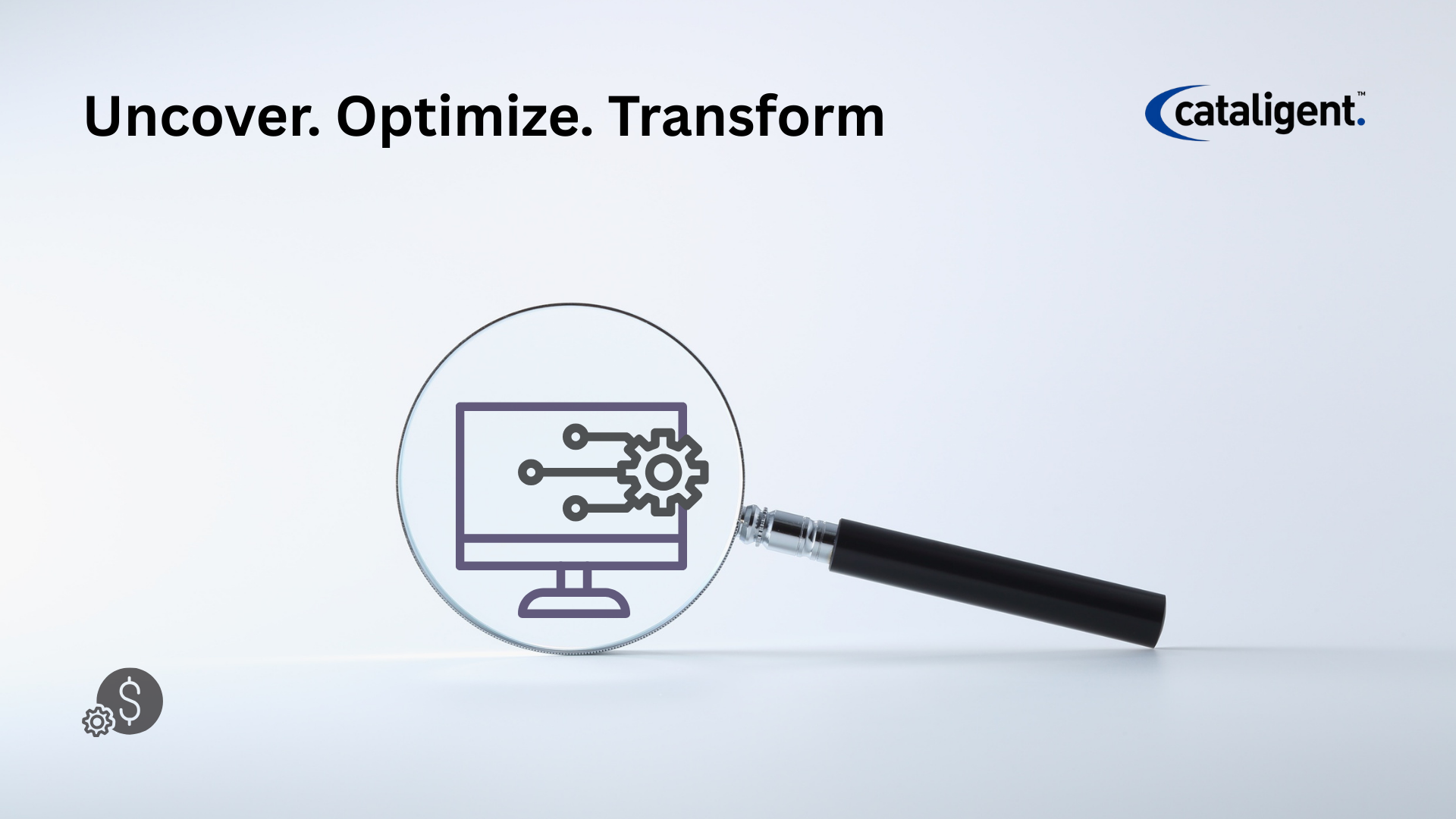Many organizations unknowingly spend significant amounts on unauthorized software, cloud services, and digital tools adopted by employees outside formal IT procurement—commonly referred to as “Shadow IT.” While these tools often enhance productivity, they create hidden costs, duplicate spending, security risks, and operational inefficiencies. Addressing shadow IT is not just a cost-saving initiative—it is a strategic enabler of business transformation, improving governance, resource allocation, and operational agility.
What It Is
Shadow IT cost optimization involves identifying, rationalizing, and consolidating unauthorized IT resources. Key aspects include:
- Discovery and Mapping: Cataloging all applications, cloud services, and tools used across the organization, whether officially sanctioned or not.
- Cost Identification: Quantifying the financial impact of redundant licenses, subscriptions, and unused tools.
- Risk Assessment: Evaluating security vulnerabilities and compliance gaps introduced by unmanaged systems.
- Optimization Plan: Rationalizing applications, consolidating redundant tools, and standardizing approved services.
- Governance Implementation: Creating policies and monitoring mechanisms to prevent future unauthorized spending.
By systematically addressing these hidden costs, organizations not only reduce unnecessary expenditure but also align IT usage with strategic business goals, supporting transformation initiatives.
Why It Matters
1. Eliminating Hidden Costs
Shadow IT often results in overlapping software subscriptions, duplicate services, and underutilized licenses. These hidden costs accumulate silently, impacting overall operational budgets.
Example: Employees across different teams may subscribe individually to the same cloud collaboration tool, leading to unnecessary repeated expenses.
2. Improving Security and Compliance
Unauthorized tools introduce potential data security and compliance risks. Shadow IT cost optimization ensures centralized control over digital assets, mitigating potential regulatory fines and breaches.
Example: An unapproved file-sharing app might not comply with data protection regulations, exposing sensitive business information.
3. Streamlining Operations and Enhancing Productivity
By rationalizing software usage, employees access standardized, approved tools, reducing confusion and support requests. Standardized platforms also enable better collaboration and process efficiency, contributing to organizational transformation.
Example: Consolidating multiple task management tools into a single platform streamlines project tracking and reporting.
4. Enabling Strategic IT Investment
Reducing spending on redundant or underutilized tools frees resources for strategic IT investments, such as automation, AI-driven analytics, and digital transformation initiatives.
Example: Savings from eliminated subscriptions can be redirected to AI-enabled process automation, enhancing operational efficiency.
5. Supporting Business Transformation
Addressing shadow IT aligns technology usage with business objectives. This optimization creates a more agile, cost-efficient, and secure IT environment, forming a foundation for broader business transformation initiatives.
Example: Rationalized IT resources enable faster adoption of enterprise-wide digital platforms, improving scalability and innovation.
How to Address It
1. Conduct Comprehensive Discovery
Map all applications, cloud services, and digital tools being used across the organization. Use automated discovery tools to detect hidden applications and track usage patterns.
Example: Detecting shadow email marketing tools or cloud storage services that have no formal IT oversight.
2. Quantify Financial Impact
Analyze subscriptions, licensing costs, and underutilized resources to understand the total financial exposure of shadow IT. Identify areas where consolidation or elimination can deliver tangible savings.
Example: Identifying duplicate CRM or project management tools that consume unnecessary budget.
3. Assess Risks and Compliance Gaps
Evaluate security vulnerabilities and regulatory compliance issues posed by unauthorized tools. Prioritize remediation for high-risk applications that could compromise sensitive data.
Example: Shadow analytics platforms storing personal customer data without GDPR-compliant controls.
4. Rationalize and Consolidate Tools
Eliminate redundant applications, consolidate similar tools, and standardize approved platforms. Ensure employees transition to centrally managed tools that meet operational and security standards.
Example: Migrating multiple team chat apps into a single enterprise-approved collaboration platform.
5. Implement Governance and Continuous Monitoring
Establish policies for application usage, approval workflows, and recurring audits to prevent the re-emergence of shadow IT. Continuous monitoring ensures compliance and cost optimization over time.
Example: Implementing automated alerts for new unapproved subscriptions and integrating approval processes into IT procurement workflows.
How Cataligent Helps
Cataligent provides CAT4 platform solutions that enable organizations to optimize shadow IT costs effectively:
- Comprehensive Discovery and Analytics: Identify all applications and cloud services in use, quantify costs, and detect redundancies.
- Financial Impact Analysis: Track subscriptions, licenses, and underutilized resources to uncover hidden costs.
- Risk and Compliance Assessment: Evaluate potential security vulnerabilities and regulatory compliance gaps introduced by shadow IT.
- Consolidation and Rationalization Planning: Recommend optimized, approved platforms for cost reduction and operational efficiency.
- Governance and Monitoring: Implement policies, continuous monitoring, and automated alerts to sustain cost savings and maintain secure IT environments.
By leveraging Cataligent’s CAT4 platform, organizations can reduce hidden IT expenditures, mitigate risks, and create a more agile and efficient IT environment—supporting broader business transformation initiatives.
Closing Thought
Shadow IT is an often-overlooked source of hidden costs, inefficiencies, and risks. By proactively addressing it through discovery, consolidation, and governance, organizations can achieve substantial cost savings, improve security, and enable business transformation. Cataligent’s CAT4 platform provides the tools and insights needed to make shadow IT optimization a strategic, impactful, and sustainable initiative.

